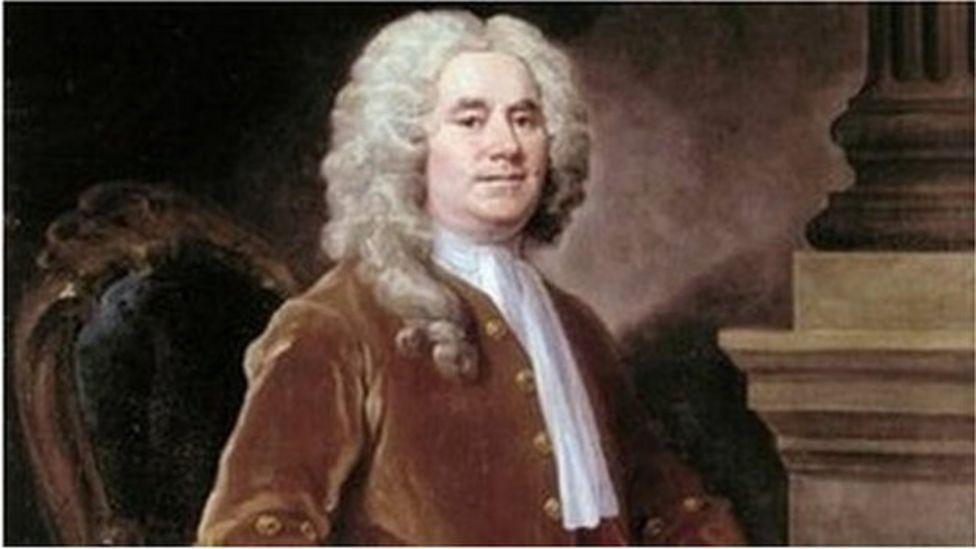The Welshman who made a major maths breakthrough

William Jones, the Welsh mathematician who was the first to properly define pi
- Published
In 1706 a self-taught mathematical genius from Anglesey became the first man to properly define ПЂ (the number pi) and unlock its practical uses.
William Jones, a farmers son, was born in Llanfihangel Tre’r Beirdd in 1675, and received only the most basic education at his local charity school.
Nevertheless, by his teens he had displayed such a flare for arithmetic that the owner of his parents’ farm, Lord Bulkeley, arranged for him to move to London to work in a bank.
On 14 March each year William Jones is remembered on international pi day, so-called because under the American-style notation, the date 3/14 represents the first three digits of the never-ending number.
The concept of pi – the ratio of a circle’s circumference to its diameter – was recognised by civilisations as early as the Greeks and Egyptians.
Pi can be calculated to a length of 31 trillion digits but is infinitely long
However, no-one had been able to pinpoint its exact value.
Jones was the first to realize pi was an irrational, non-repeating number, and while it could be continually refined and expressed as a decimal, it was infinite and would never have an ultimate conclusion.
Therefore, it needed its own unique non-numerical symbol, in order to represent its outlying status.
Welsh financier Billy Crofts now works in the City of London, but became fascinated by Jones whilst studying maths at Leeds University.
“My ears pricked up when I heard he was a Welsh mathematician, and even more so when I read that he’d not only realised the undefinable nature of pi but had discovered ways in which it could be practically applied to everyday life.
“Rubbing shoulders with Sir Isaac Newton and Edmond Halley, this self-taught man’s brain was so powerful that he could conceive ideas which no-one else had even dreamt of. What he set out has changed every one of our lives to this day.”
Aged 20, Jones went to sea with the Royal Navy, teaching maths to sailors and assisting with the ship’s navigation.
He sailed to the West Indies, and in October 1702 he was part of the raiding party at the battle of Vigo.
He retired from the Navy that year and supporting himself through teaching basic maths to ordinary people in coffee houses, he set about expanding his theories.
The resultant book, Synopsis Palmariorum Matheseos, (or A New Introduction to the Mathematics), brought Jones to the attention of Newton and discoverer of the eponymous comet, Halley.
Mr Crofts explains: “Between the three of them, they were able to put Jones’ hitherto theoretical ideas into practical use and confirm that they were indeed true.
“Pi enhanced Newton’s concept of calculus, and with Halley he was able to use it to better predict the Moon’s orbit around the earth, greatly aiding improvements in plotting ships’ longitudinal position far from land in the high seas.”
Mr Crofts added Jones’ work also helped to make clocks more accurate, as pi defined the swing of a pendulum according to the length of the chain it was held upon.
Having married twice and fathered four children, Jones died aged 74 in 1749, leaving behind him one of the most extensive libraries of mathematical theory in the world.
In 2000, his collection of books was purchased by Cambridge University for ВЈ6,370,000 with the aid of a grant from the Heritage Lottery Fund.
In conclusion, Mr Crofts said: “We simply couldn’t lead our modern, technological lives without the discoveries of William Jones.
“From the phones in your pocket, to the satnavs in your car, and the weather forecast you wake up to in the morning, Jones’ mastery of π has revolutionised the world as we know it today.”